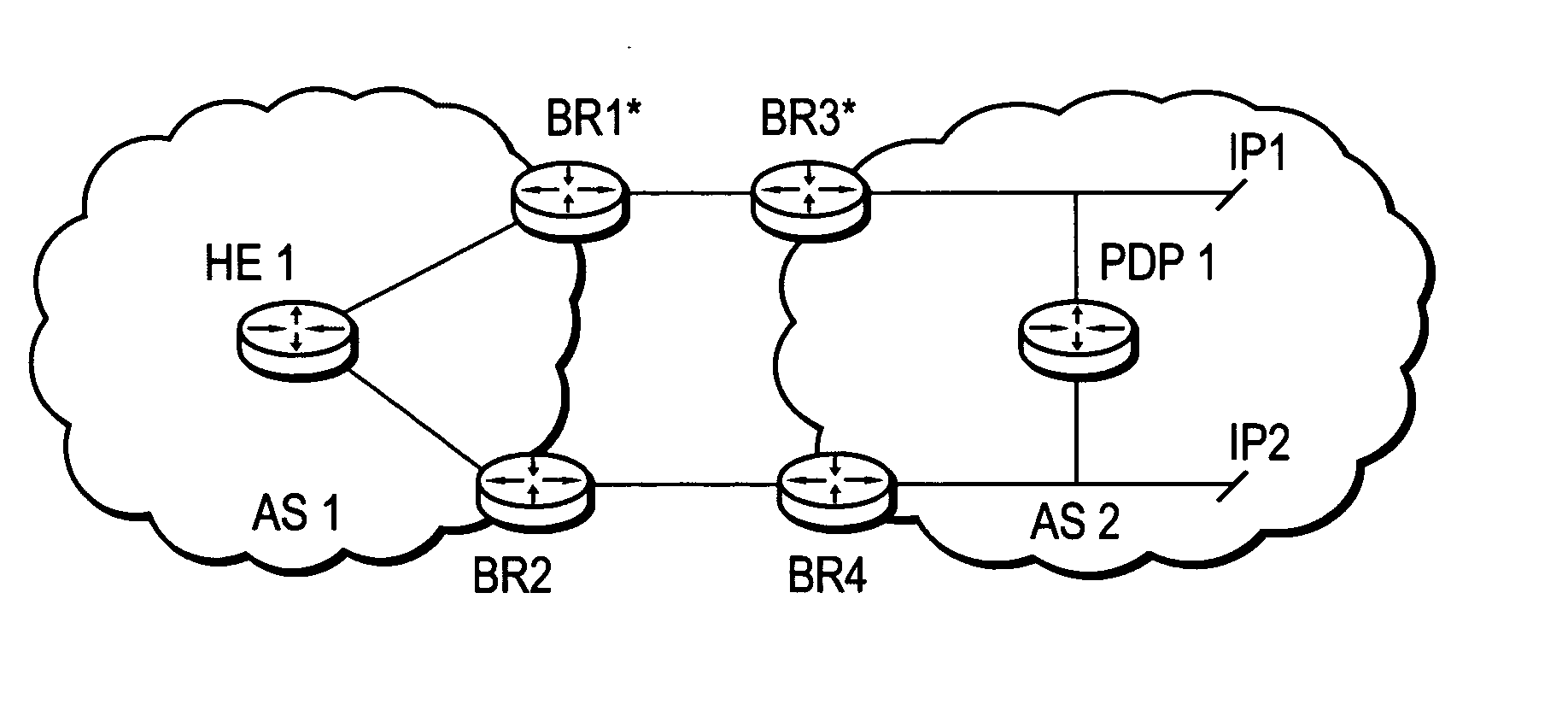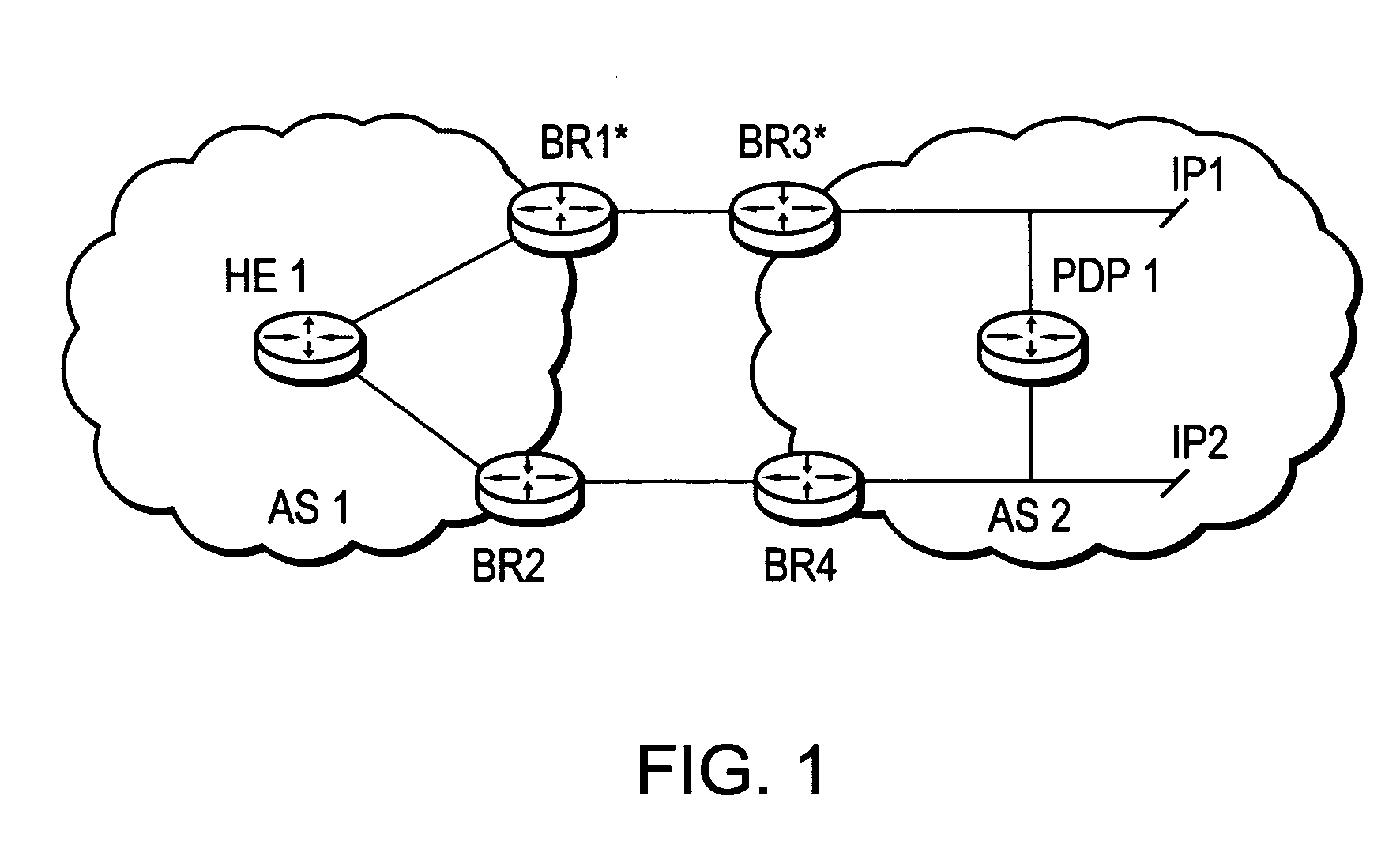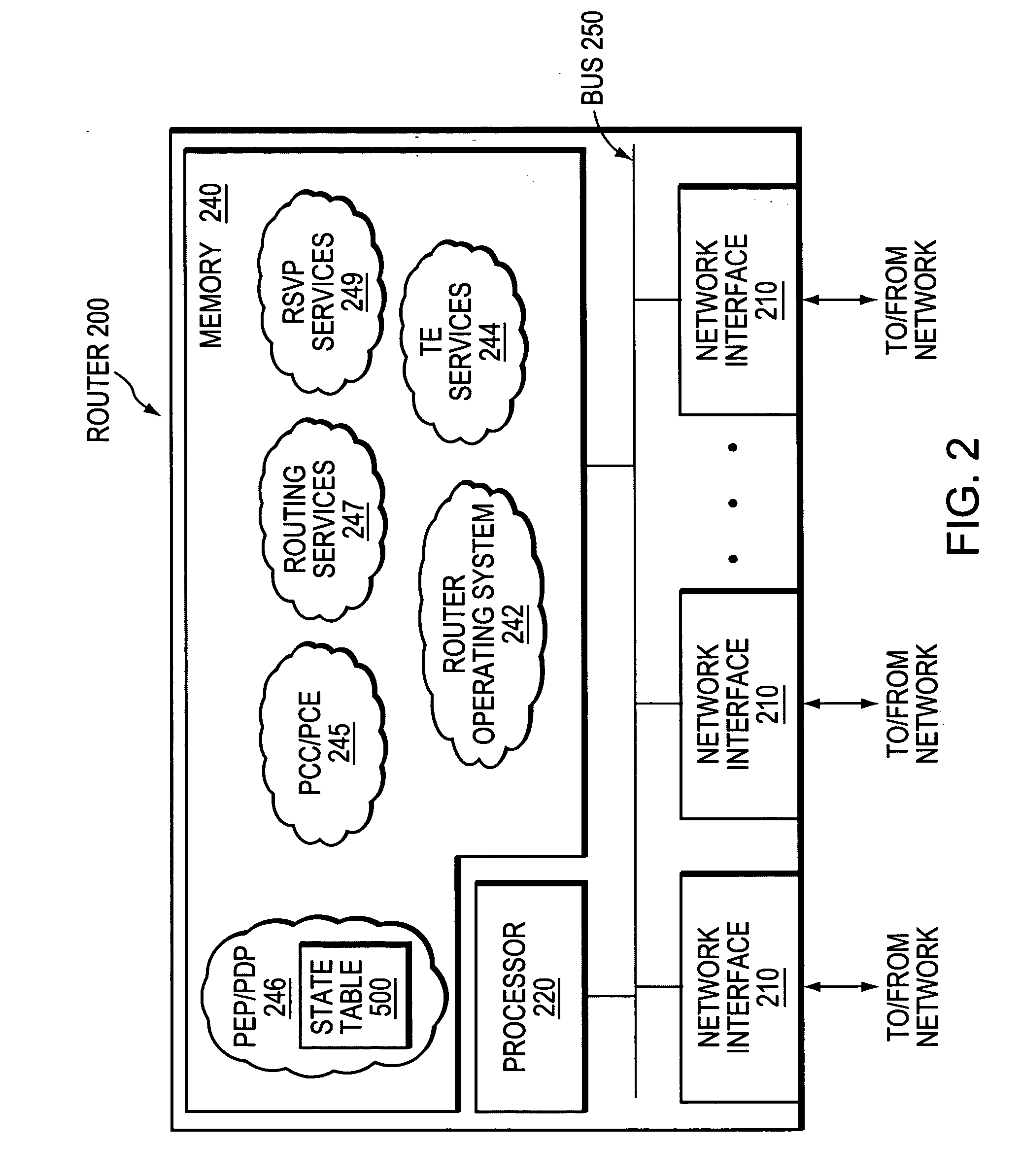Dynamic enforcement of MPLS-TE inter-domain policy and QoS
- Summary
- Abstract
- Description
- Claims
- Application Information
AI Technical Summary
Benefits of technology
Problems solved by technology
Method used
Image
Examples
Embodiment Construction
[0031]FIG. 1 is a schematic block diagram of an exemplary computer network 100 comprising interconnected autonomous systems AS1 and AS2. An Autonomous System (AS) is herein defined to be a group of intermediate nodes, such as inter-domain and / or intradomain routers, within a network that are subject to a common authority and execute one or more inter-domain and / or intradomain routing protocols. Although each AS is illustratively an autonomous system, those skilled in the art will appreciate that the ASes may alternatively be configured as routing domains or other networks or subnetworks. To that end, AS1 includes inter-domain routers, such as AS border routers BR1* and BR2, through which communication, such as data packets, may be exchanged with AS border routers BR3* and BR4, respectively of AS2. Notably, the “*” indicates that the border routers are configured as Path Computation Elements (PCEs) as described herein. AS1 further includes exemplary intradomain router HE1, while AS2 ...
PUM
 Login to View More
Login to View More Abstract
Description
Claims
Application Information
 Login to View More
Login to View More - R&D
- Intellectual Property
- Life Sciences
- Materials
- Tech Scout
- Unparalleled Data Quality
- Higher Quality Content
- 60% Fewer Hallucinations
Browse by: Latest US Patents, China's latest patents, Technical Efficacy Thesaurus, Application Domain, Technology Topic, Popular Technical Reports.
© 2025 PatSnap. All rights reserved.Legal|Privacy policy|Modern Slavery Act Transparency Statement|Sitemap|About US| Contact US: help@patsnap.com



